
Arquivo para a ‘Museology’ Categoria
Neither objectivity nor subjectivity just beauty
The fact that the contemporary world finds no space for silence, for listening and 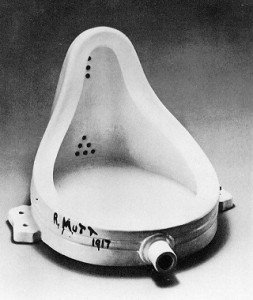 especially for contemplation, the mere fact of admitting that there is the beautiful even without any belief, is the fact that we cling to the tensions between subject and object, now Projected on the object, sometimes projected on the subject, but without the “world of objects” is an abstract.
especially for contemplation, the mere fact of admitting that there is the beautiful even without any belief, is the fact that we cling to the tensions between subject and object, now Projected on the object, sometimes projected on the subject, but without the “world of objects” is an abstract.
Among the three most beautiful phrases about art encounter: “Art says the unspeakable; Expresses the inexpressible, translates the untranslatable “of Leonardo da Vinci, but on the beautiful expression of art I find the phrases between the ones I most appreciate and perhaps the most quoted, of Victor Hugo:” the beautiful is so useful with the useful, Sometimes even more “and Dostoevsky:” beauty will save the world ”
The fact is that art is always expressing what everyone sees according to necessity and utility: the new, the beautiful and the unprecedented, following the line of da Vinci, and following the line of Victor Hugo the useful of the seemingly useless, Marcel Duchamp, by placing a urinal on his head and calling it “The Fountain” (1917), revealed the double face of utility, or perhaps the uselessness of what we call useful, then it can be said that art is paradoxical.
The modern utilitarian philosophy will say that the beautiful is the concept related to certain characteristics visible in the objects (or beings), nothing differs from the concept of property and the aesthetics would be only and exclusively the character of the object.
Schopenhauer criticizes Kant in saying that he does not correctly establish the content of the a priori “common frontier” of subject and object, for in the first place he does not recognize the “first, principal and most universal” form of representation, namely, that of being Object for a subject (of the Objekt-für-ein-Subjekt-Sein) before talking about the beautiful.
According to him when we preach something beautiful (schön), we say, in objective terms, that in him we know “not the particular thing, but the Idea”. However, since any particular thing is the objectification of an idea, at first it can be known in everything, as the philosopher concludes: “Everything is beautiful”, but for him everything is a part of the Will and not of Being.
The work The origin of the work of art, fruit of three lectures given by Heidegger in 1939, but the book was only published in 1950, with translations into the Portuguese of the 70s, will develop according to three aspects: the thing, the truth and The art-poetry.
For truth he takes up poetry or “alethéia,” a phenomenon from which being (of men and things) comes to the fore and gains meaning, already the expensive concept thing to his master Edmund Husserl, to return to itself and do it with Poetry, not as a literary genre, but Poetry is rather the movement from which things arise, it is the movement of production from where it happens to the unveiling of the being making it gain body and meaning, art is then unveiling, happening Or a new “appear” of the thing happens.
Exemplifying: A stone before being an art, it will be the thing-stone transformed into thing-art through the “artifice” of the artist and is the soul of this one who, only going beyond the limits of his body, gives life to the stone and transforms it into art, In this stone is then ontological.
Rodin’s phrase: “I choose a block and I take everything I do not need from it”, or from Michelangelo to the statue of Moses: “Why not talk?”.
Lost or new homo sapiens?
In a paper published in Nature on June 7, a new skeleton of a humanid, the fact of being a homo sapiens is controversial, suggests that a race of humanoids lived in North Africa, where it is Morocco, for more than 315 thousand years ago.
a homo sapiens is controversial, suggests that a race of humanoids lived in North Africa, where it is Morocco, for more than 315 thousand years ago.
This changes the earlier conception dating from about claimed the emergence about 100 thousand years ago, measurements were made by laser equipment at various institutes in Europe, including Germany, where the study at the Max Planck Institute originated.
Jean-Jacques Hublin, author of the Nature paper and managing director of the Institute for Evolutionary Anthropology in Leipzig, explained: “Until now, the common knowledge was that our species probably arose, rather quickly, somewhere in the ‘Garden of Eden’. Probably in sub-Saharan Africa, “but now he added:” I would say that the Garden of Eden in Africa is probably Africa – and it is a large, large garden, “indicating a more extensive area for the emergence of man.
Hublin visited the Jebel Irhoud archaeological site for the first time in the 1990s, but had no time or money to dig up until 2004, having joined the Max Planck Society Society, rented a tractor to remove about 200 cubic meters of rock Which blocked access to the deeper part of the site.
Initially, one led by archaeological scientist Daniel Richter and archaeologist Shannon McPherron, also at the Max Planck Institute for Evolutionary Anthropology, dated the site and all human remains found between 280,000 and 350,000 years using two different methods, but then other countries also made measurements Using methods with laser use and the approximate date is 315 thousand years.
Hublin says his team tried and failed to get DNA from the bones of Jebel Irhoud.
This genomic analysis could have clearly established if the remains live in the lineage that leads to modern humans, but everything indicates that it may be a link more than humanoids clearly identified with the human race, and may be the missing link between us and the early primates.
The will to Power
Power is the logic for many peoples, happiness no. 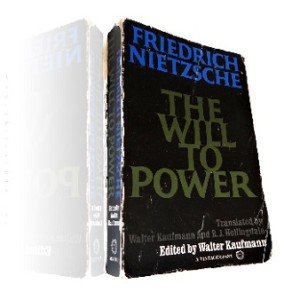
Power Will or Power (“Der Wille zur Macht”) is a concept of Nietzsche’s philosophy that is used as the basis in the construction of all his thought, for he is in everything in life, not only in organic life, Ranging from chemical reactions to the human psyche.
Teilhard Chardin gave another name that was the idea of vitalization, that is to say, the life more and more complex, and the man is the maximum of the complexification of the life, occurs by a process of cerebralización, and that means that we are in “evolution”, but not necessarily in power.
Thomas Aquinas, spoke of act and power and potency and what “virtually” is contained in the act, for example, we planted a seed and it is virtually a tree. Our contemporary problem, reflected in every Western civilization in particular, but on the whole planet, is whether our present process of empowerment in the sense of development is corresponding to a general happiness, that is, are we happy?
Certainly all humanity would say no, one of the contemporary diseases was stress, it became the panic syndrome, and depression gives signs of growth as frightening as other physical illnesses such as cancer and AIDS.
But Nietszche’s hypothesis contrasts with modern quantum physics, since his first assumption is that the total force that exists in the universe is determined, not infinite, while astrophysics is confronted with an expanding universe with forces not yet measured due to black holes.
But from Nietzsche’s theory it is reduced that the number of situations, and the combinations of these forces are measurable, that is, also determinate and finite, as is supposed in the Laplacian universe, and it is not the same universe as Einstein and Heisenberg.
In Nietzsche’s terminology the Will to Power is an original law, without exception or transgression.
Thus in the philosopher’s words the Will to Power is not something created, or depends on special conditions, as in religion or previous theories, but it comes from the very reality of things, so it is necessary, as presupposes Husserl’s phenomenology to Things themselves, to determine what they really.
NIETZSCHE, Friedrich. The will to power. Tradutor to Walter Kaufmann e R. I. Hollingdale. Nova York: Vintage Books. , 1968.
(Português) Imaginário e mitologia
Imaginary and Mythology Outside of Christianity and, to some extent, Islam, mythologies are reborn and a new and powerful literature that awakens, especially in the young, something fantastic, so it is called fantastic literature. Fantastic literature is a genre in which fictional narratives are centered on elements not existing or not “recognized” in reality at the time the work was written.
mythologies are reborn and a new and powerful literature that awakens, especially in the young, something fantastic, so it is called fantastic literature. Fantastic literature is a genre in which fictional narratives are centered on elements not existing or not “recognized” in reality at the time the work was written.
This is because one cannot think of Macunaíma, without thinking of the Brazilian regional symbols in Naruto, without thinking about Japanese society, nor think of Lord of the Rings without thinking of elves, elves and other figures of Celtic and Norse literature, although it was Written by JRR Tolkien, which although it is seen as English was born in South Africa.
Thinking of Macunaíma (writted by , where we can draw aspects of the recent contemporary culture of Brazil, I think of the definitions or uncertainties given by Todorov: “The fantastic occupies the time of this uncertainty. Once one of the two answers is chosen, the terrain of the fantastic is left to enter into a neighboring genre: the strange or the wonderful. The fantastic is the hesitation experienced by a being who knows no more than natural laws, in the face of an apparently supernatural event. (Todorov 1980: pp. 15-16).
Either we go to the categories of illusion or the being actually exists, as Todorov asks. Todorov affirming that he will only give a definition at the end and does so after analyzing some of his major works such as The Passionate Devil of Cazotte, Jan Potocki’s Manuscript of Saragossa and the singular example of Aurelia de Nerval, but at the same time he anticipates a first definition: “The concept of fantastic is therefore defined in relation to the real and imaginary, and the latter deserve something more than a mere mention” (Todorov 1980: pp. 16).
What is not to be confused is this literature with the Christian fables of the “Chronicles of Narnia”, which was written by the Irish author CS Lewis, written in the 1950s, and in the case of national literature we could cite The Lady Compassion of Ariano Suassuna, chose first edition is from 1956.
The limits between mythology and the imaginary are clear, it is possible in the second case to establish a sociological analysis in which are found real social elements to which the imaginary characters.
TODOROV, Tzvetan. Introdução à literatura fantástica, Espanha: PREMIA (version digital translate to portuguese) 1980.
The not so natural man
Modern philosophy, from Hobbes to Hegel, then the crisis settles, failed to define what 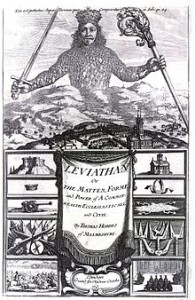 would indeed be natural, and we ask the natural is the man at war? Or in peace? If we can put aside what is in fact natural and nature.
would indeed be natural, and we ask the natural is the man at war? Or in peace? If we can put aside what is in fact natural and nature.
Let us begin with Hobbes, “If there were no corruption and vice of degenerate men, there would be no need for other laws, nor the need to form separate societies based on positive contracts instead of a great and natural community.” (Locke, 1978, p. 5), seems current and it is because the state idealized by Hobbes and deified by Hegel is what was implanted.
For Hobbes the State of Nature is the State of War itself against all, in fact of the state against the citizen, but this is not clear, he emphasizes that before the threat of violent death, life is characterized as: “sordid , Poor, brutish and short, “in the terms he expounded in chapter XIII of Leviathan, his principal work.
War is then a permanent sensation of fear that implies the constant preoccupation with self-protection, very current, and is of 1651 (in the photo the original cover).
John Locke goes on to establish as one of the great precursors of liberalism that men are equal and free, and that within the limits of the law of nature can decide, in a contract established with others, what actions can be practiced in the relationship with The others, it can be said that he is not in a state of war, but he must establish rules so that the “natural” limits are respected.
Since man cannot destroy the gifts of nature, he must, for the sake of his “unlimited” freedom, justify his attitude toward preserving humanity, said in his pamphlet Two Treatises on Government (II, § 6).
“Each one is obliged to preserve himself, and not to abandon his position of his own accord; For the same reason, when their own preservation is not at stake, each should, as far as he can, preserve the rest of mankind, and can not, unless it is to do ju-stice to an offender, to take away or harm life Or what favors the preservation of the life, liberty, integrity or assets of others.” (LOCKE, 1998, p.385).
Finally comes Jean Jacques Rousseau who defends the “good savage”, that is, man is good by nature society corrupts him, said this way:
“Men in this state [of nature], having no kind of moral relation or known duties to each other, could neither be good nor bad, and had neither vices nor virtues. Let us not, above all, conclude with Hobbes that, having no idea of goodness, man is naturally evil; … “(ROUSSEAU, 1978, p.158).
Later this will become modern idolatry of the state in Hegel, but it is necessary to return to this “ideal” state from Kant to make a course of thought.
(pages in brazilian edition)
HOBBES, T. Leviathan, Collection Os pensadores, São Paulo: Abril Cultural, 1978. LOCKE, John. Two agreements about the government. São Paulo: Martins Fontes, 1998. ROUSEAU, J.J. Discourse on the origin and foundations of inequality among men, Collection Os Pensadores, São Paulo: Abril Cultural, 1978.
Art that reeducates the look
Whenever we look at certain scenes and public places we see something beyond the real, it is our imaginations that recall our memory and our fantasy about that place, it was easier to do this in the old days because there was a little poetry and art in the air, and now?
the real, it is our imaginations that recall our memory and our fantasy about that place, it was easier to do this in the old days because there was a little poetry and art in the air, and now?
Well the digital world, demonized by some and still misunderstood by many analysts, everything takes a time of maturation, already has several facilities and news.
This is the case of the artist and photographer Gerson Turelly, whose design  and
and  digital manipulation were made in Israel, but most of the sights with virtual
digital manipulation were made in Israel, but most of the sights with virtual
imagination are from Brazil.
His project has the name of “Looks New” and as he says the goal is “to create a playful connection with the baggage of memories of each individual in relation to the spaces and sights of his city.”
You can follow the creative work on the artist’s website, where you will get more information about this project, such as the process you use in composing your creations.
It is in my opinion a reinvention of works that we already know as the “chubby” of Salvador, works by the plastic artist Eliana Kértsz, where the variations are arms, legs, cheeks full of curves and volume.
Also called the “Cow Parade”, or “cow parade”, which ran the world, but in each city allowed its visual communication with the space, for example in several tourist points of Belém the cows made of fiberglass that were Customized by selected regional artists, and had Fafá de Belém (she is brazilian singer) as godmother.
The interactive and participative enter into the imaginary of contemporary art, and it is Art.
Almost La la Land wins
Almost because actresses Warren Beatty and Faye Dunaway erroneously  announced that La La Land: Singing Seasons but the winner with merits was Moonlight: Under the Light of the Moon, The critics darlings had the best actress Emma Stone – La La Land: Singing Seasons And Best Actor Best Actor Casey Affleck – Manchester by the Sea
announced that La La Land: Singing Seasons but the winner with merits was Moonlight: Under the Light of the Moon, The critics darlings had the best actress Emma Stone – La La Land: Singing Seasons And Best Actor Best Actor Casey Affleck – Manchester by the Sea
Best Supporting Actress awards went to Viola Davis – A Boundary Among Us and Best Actor for Mahershala Ali – Moonlight: Under the Moonlight Light, the film also won best screenplay adapted with Barry Jenkins and Tarell Alvin McCraney -.
Best Director, the now highly-rated (winner of two Golden Globes) director Damien Chazelle – La La Land: Singing Seasons, who also won best picture with Linus Sandgren.
Best animated film went to Zootopia and best foreign film for The Apartment, from Iran.
Without much news, with better soundtrack of Justin Hurwitz – La La Land: Singing Seasons stayed with the hours of the night, but Moonlight, excuse the pun took a little the brightness.
Barber shops, cafes and nets
According to Peter Burke, the locu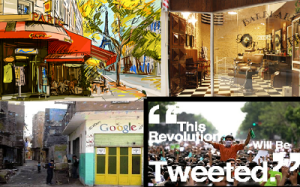 s of religious and political discussions in 1620 was the barbershops, quotes the Italian writer Ludovico Zuccolo, who evoked them full of ordinary people discussing the religious problems and the attitudes of the rulers.
s of religious and political discussions in 1620 was the barbershops, quotes the Italian writer Ludovico Zuccolo, who evoked them full of ordinary people discussing the religious problems and the attitudes of the rulers.
The first great wave of reading was to interpret the Bible, the same that Galileo had claimed and which is still ignored today, the same Ludovico said that as the number of illiterates fell, they were common in the sixteenth century in Italy, for example, shoemakers , Dyers, masons, and housewives, claim the right to interpret the sacred scriptures.
In the 1620s religious concerns were compounded by political concerns. Ludovico Zuccolo, an Italian writer, evoked the image of the barber shops full of ordinary people discussing the measures of the rulers.
Anyone who thinks that there is an excess of information today, as soon as the books began to be printed at more reasonable prices, one already complained about the number of existing books and how one would read them in a single life, in 1975 for example, 1745 The Vatican library, housed only 2,500 volumes, in the seventeenth century the Bodleian Library of Oxford had 8,700 titles, and the imperial library of Vienna, 10,000.
From the barbershops to the cafés, Café de La Paix is the scene of many novels, paintings and poems, Guy de Maupassant and Emile Zola frequented it, the proximity to the Opera Gamier (next door) made it a kind of Museum, In 1975 it was considered a historical site by the French government.
Would cybercafes be your descendants? They lived with libraries and other places of dialogue and culture, they were important in the “Arab Spring,” especially in Libya and Egypt, there were violence events with heroes who posted denunciations in these cybercafes.
Both the uprising in Egypt and Libya were recorded in numerous social media, a good example is the video with 2,000 deaths (video of OneDayOnEarth), reveal the taste of the dictators for the worship of the person and vertical media.
Long before the outbreak of the war in Syria, looking at the comments on the networks, we knew that there was a powder keg (see our post 2012), and also a blogger Tal al-Molouhi, arrested in 2009, was one of the fuses for the uprising.
The governments and owners of vertical media do not accept the influence of the networks, because it is their bankruptcy, but now even the authoritarian Trump does not give ball to them, makes its own media, of course it does not go unanswered, in social media media Is losing ugly.
Forgive me Todorov!
I discover only today, who died on February 7 of this year in Paris, Tzvetan 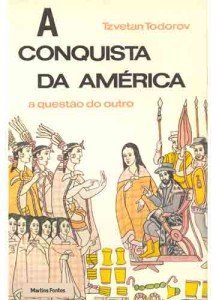 Todorov, philosopher and literary critic bulgáro, little known, but not less important for our century.
Todorov, philosopher and literary critic bulgáro, little known, but not less important for our century.
I have as his strongest phrase, one that made him a prophet of the invasion of Islam in Europe, he said long before the emigration crisis: “We can measure our degree of barbarity or civilization by how we perceive and welcome others, the different . ”
An interview he gave in France (Radio France Culture, 2009), helps to see this prophecy of Todorov: “” I wrote my first book of History of Ideas, which is called ‘We and the Others’. It was a work on the plurality of cultures analyzed from the point of view of the French tradition. I studied authors from Montaigne (…) to Levi-Strauss. I have tried to see how these authors treated this difficult question for us today: the unity of humanity and the plurality of cultures. In this series of authors, I discovered that the ones I felt closest to were the humanists. ”
In Brazil, he gave an interview to the Borders of Thought in 2012, in which he stated: “I realized that, as a historian and essayist, I took advantage of literature more than literature studies, and read novels, poetry, and Different histories than literary analyzes or written theses on literature, which seem to me nowadays to be directed almost exclusively to other specialists in literature. While the novel interests everyone, and I feel closer to everyone than the experts. ”
His most famous books are: The conquest of America: the question of the Other, São Paulo, SP: Martins Fontes, 1982 (pdf), The Man Uprooted. São Paulo: Editora Record, 1999, The Fear of the Barbarians: beyond the clash of civilizations. Petrópolis: Editora Vozes, 2010, The Intimate Enemies of Democracy. São Paulo: Companhia das Letras, 2012, Life in common: essay on general anthropology. São Paulo: Unesp Publishing House, 2014.
Lesser known books, but no less important: I consider a classic the book Theories of the symbol. São Paulo: Editora Unesp, 2014, Symbolism and interpretation. São Paulo: Unesp Publishing, 2014 and Theory of literature: texts of the Russian formalists. São Paulo: Unesp Publishing House, 2013.
He died at age 77, in the city of Paris, was born in march 1st , Sofia, Bulgarian in 1939, though considered within the structuralist chain, without thought transcended it and is one of our important contemporaries to be read.
I share with her the idea that both fascism and Stalinism stem from the idea that we have been giving it powers over citizens, who have difficulty controlling it.
He received in 2008 the Prince of Asturias Award for Social Sciences, according to the document for representing “the spirit of unity of Europe, East and West, and commitment to the ideals of freedom, equality, integration and justice.”
Supper of the ashes
The original name of the work of Giordano Bruno is La cena de las cenizas (in Italian: La cena  de le ceneri), what he proposes in this work is a conception of the world, if today we see the planet and the whole universe as “our home” , Giordano Bruno was one of the first to see this as well.
de le ceneri), what he proposes in this work is a conception of the world, if today we see the planet and the whole universe as “our home” , Giordano Bruno was one of the first to see this as well.
Giordano Bruno’s theories far surpassed those of Copernicus, proposed that the sun is simply a star, that the universe may contain an infinite number of inhabited worlds with intelligent beings and animals, member of the Dominican Order, studied St. Thomas Aquinas and developed A different cosmic theory of church thought at the time, and was accused of pantheism and doomed by the Inquisition.
But from a strictly religious standpoint his controversies were as to transubstantiation in the Eucharist, the Trinity, the incarnation of Christ, and the virginity of Mary.
He influenced thinkers like Spinoza and died at the stake with the respect of many.
In his book The Supper of Ashes declared: “The Earth and the stars …, as they dispense life and food to things, restoring all matter which they lend, are themselves endowed with life, to a much greater extent; And being alive, it is in a voluntary, orderly and natural way, according to an intrinsic principle, that they move towards the things and spaces that suit them, “since Galileo was already repaired, Still higher in relation to Giordano Bruno.
It is Ash Wednesday, and it is not bad if we could go beyond hypocrisy and proselytism to actually speak in dialogue, comprehensively both in the religious field and in the ideological field, but the inquisitors survive even though God has nothing to do with it.

